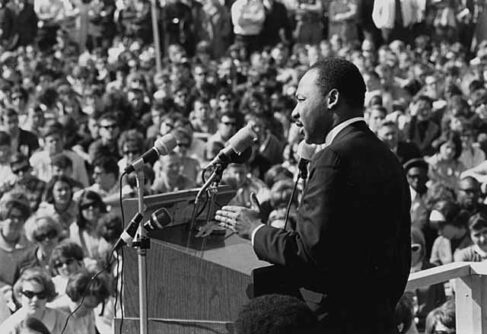Why should philanthropists—or those interested in philanthropy—read and discuss literature? Literature educates our sentiments and forms our tastes about what is beautiful, beneficial, and kind, as well as opposite to these. It shapes our inclinations about how to conduct our relations with others. It informs our capacity for moral discernment.
The education of sentiment has become especially important in our modern, post-Enlightenment period. The Enlightenment philosophers had insisted that reason is the basis for moral judgment. In reaction to this, later philosophers emphasized the importance of feeling and sentiment: as I recently wrote in this space, the philosopher David Hume gave preeminent place in his moral philosophy to the sentiment of benevolence. Hume’s estranged friend and French Romantic philosopher Jean-Jacques Rousseau claimed that the basis for morality is our sentiment of natural repugnance at seeing others perish or suffer; Rousseau thought that a good education would encourage us to remain sensitive to this natural feeling and not to allow it to be squashed by rational calculation of self-interest.
It’s this sort of education that was intended by Dickens in A Christmas Carol. In the spring of 1843, Dickens began a pamphlet on the condition of poor children in England. As he worked, Dickens realized that his message would be more powerfully conveyed by a story that touched the heart than by a pamphlet of reasoned arguments; as he wrote in a letter at the time, “You will certainly feel that a sledge hammer has come down with twenty times the force—twenty-thousand times the force—I could exert by following out my first idea.” Dickens then wrote A Christmas Carol in a few short weeks late in 1843.
A Christmas Carol teaches that care for one’s fellow man makes for greater happiness than hoarding up wealth. Ebenezer Scrooge has lifted himself out of a hard youth and tried to master fate by building up enough wealth never to be so vulnerable again, yet in the process has become hardened and unhappy. Scrooge’s fiancée, Belle, breaks off their engagement, accusing him that he “fears the world too much.” Visited by the three Spirits of Christmas--Past, Present, and Yet to Come--Scrooge comes to feel that cheerfulness and security in a turbulent world are best ensured by connections to fellow men and a release from fear.
At this time of the Occupy Wall Street movement, it’s interesting to note that Dickens, at least in A Christmas Carol, does not condemn business or money-making per se nor confirm fears that a rich man will find it harder to enter Heaven than for a camel to pass through the eye of a needle (Matthew 19:23–24). Ebenezer Scrooge’s former partner Jacob Marley does not lament that he was a money-lender and business man when he makes his ghostly visitation to Scrooge. Marley’s ghost declares that “the dealings of my trade were but a drop of water in the comprehensive ocean of my business.” Nevertheless those dealings were properly part of his business, even though that business should have also included “charity, mercy, forbearance, and benevolence.” At the end of the tale, Scrooge keeps to his business—albeit with a new attitude—even while he becomes “as good a friend, as good a master, and as good a man, as the good old city knew.” This is a comfortable philanthropy in which the rich can retain their status so long as they generously share their wealth.
If you’ve only seen A Christmas Carol on stage or in a movie, even Brian Desmond-Hurst’s unsurpassable 1951 movie version with Alastair Sim, I encourage you to read A Christmas Carol this season. There are other wonderful books to educate the sentiment about philanthropy—including Dickens’s Our Mutual Friend and Bleak House and George Eliot’s Middlemarch (described by Virginia Woolf as “one of the few English novels for grown-up people”). This year’s surprise best-seller, Darcie Chan’s self-published novel The Mill River Recluse, has as its theme the meaning of anonymous philanthropy for both the philanthropist and her beneficiaries. Any of these would be worth taking up if you have leisure time over the holidays and are contemplating your own philanthropic resolutions for the New Year.





